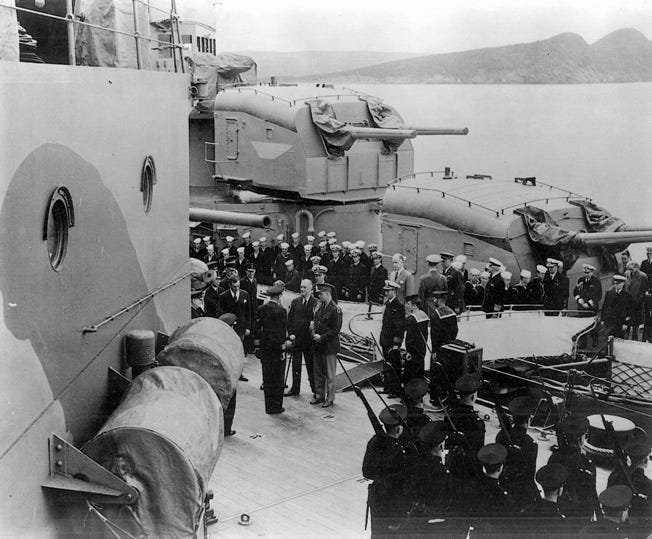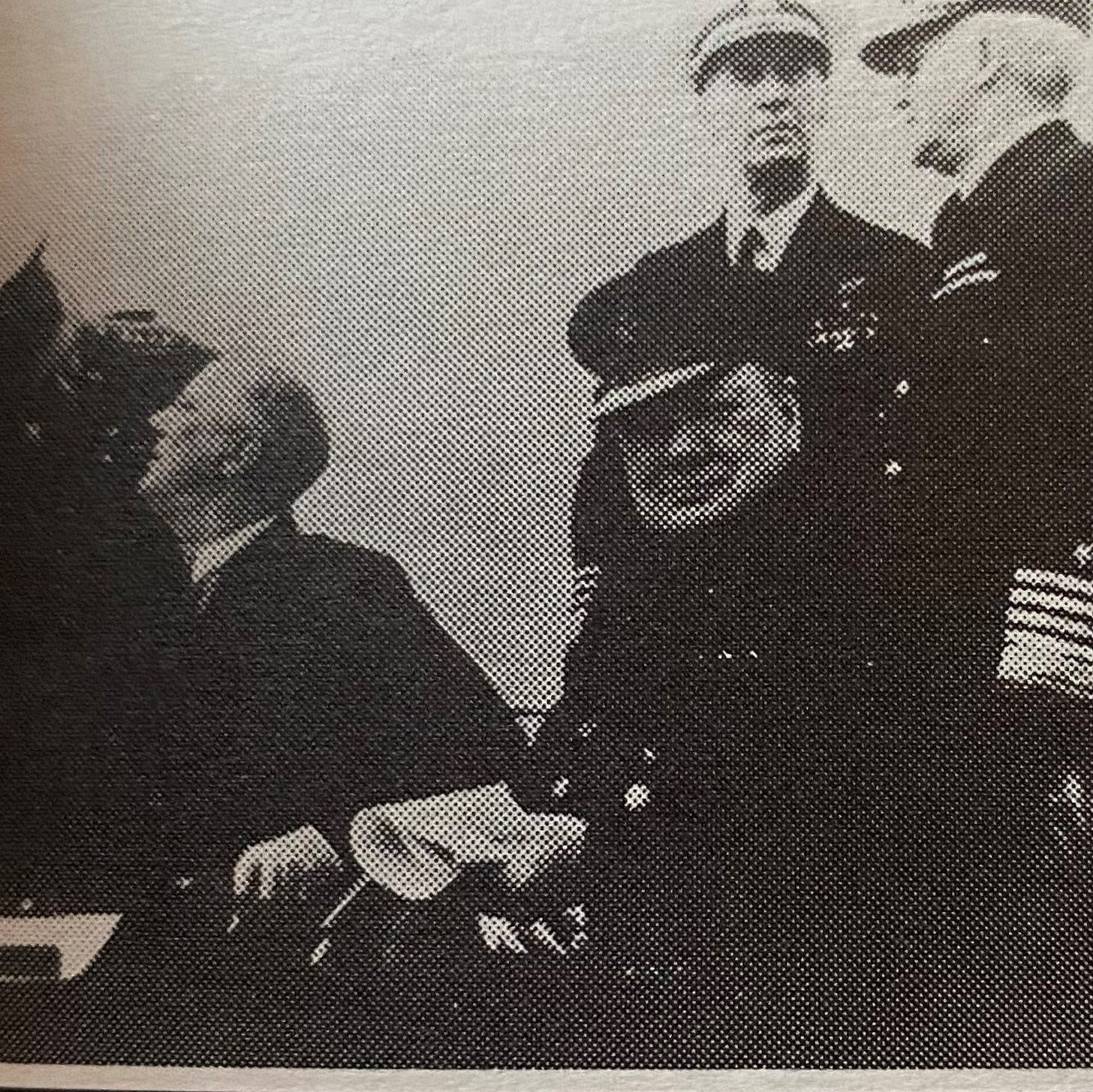An Anglo-American Agreement was put in place for a 90-year lease on June 11, 1941, and was officially known as the American Base Act. Newfoundland was still part of Britain at this point in time and a pact between the US and Britain resulted in a Lease for Land. In exchange for 50 refurbished US Navy destroyers, British claimed territories in North America and were given to the United States for the building of military bases. The Land Lease was for 99 years and Newfoundland was a vital piece of property due the strategic location. Newfoundland men and women had come by the thousands from all parts of the Island to fill the job openings during the construction of the Argentia Naval Base.
The Naval Base and Air Station were fully operational when the United States officially joined the war in December of 1941. The site consisted of three runways, each measuring 5,000 feet in length, more than 2,000 feet of wharf, a floating dry dock, hangars, storage space for 15 million gallons of gasoline and oil, and living quarters.
Throughout the war, Allied forces used Argentia for their anti-submarine air patrols and task force escorts. The largest American task force in the Atlantic, made up of five carriers and more than 50 destroyers and patrol craft, was also based there.
Fort McAndrew, meanwhile, served as a base for an infantry company, a seacoast artillery group, an anti-motor torpedo boat battalion and an anti-aircraft artillery company. The army's main function there was to defend Argentia's naval and air base.
A historic meeting took place off the Coast of Argentia in August 1941, near Ship Harbour, aboard a warship. Winston Churchill and President Franklin D. Roosevelt were preparing the Atlantic Charter. The documents helped formulate the basis for the United Nations Charter, making Argentia the spiritual birthplace of the United Nations Organization. The Charter was a joint declaration of how peace should be maintained in a post-war world. The event was top secret as many German Subs were lurking around the waters of the North Atlantic. The magnitude of the event’s would not be understood for decades. The heavy cruiser USS Augusta was carrying FDR and arrived at Little Placentia Bay off the Base. FDR inspected the base construction progress and did some fishing from the cruiser over the next two days. HMS Prince of Wales carried Winston Churchill. They both met to discuss important war strategies and logistics once the United States joined the War. The negotiating of a press release was released on August 14, 1941, in Washington DC and London, England. It would later be characterized as the Atlantic Charter, although never formally signed, the document later became the basis for the United Nations Charter.
This was the two leaders’ FIRST face-to-face meeting, although they had corresponded for two years. Both men believed that the disturbing chain of events in Europe and the Far East demanded personal discussions. Winstor Churchill was said to be “as excited as a schoolboy on the last day of the term,” according to his private secretary.
During their Argentia conference, the two leaders and their advisers met and talked continuously—in the mornings, afternoons, evenings, and over meals.
The participants did not know it at the time, but their conference was the precursor of subsequent high-level meetings during the war, while their joint statement would ultimately serve as the cornerstone for what would become the United Nations.
Excerpt from H.V. Morton’s Book “The Atlantic Meeting”:
“Britain’s latest battleship, the Prince of Wales and an escort of destroyers were placed under orders; a special train had to be chartered to take the Prime Minister, the chiefs of staff and their advisors to the port of embarkation; special food and other stores had to be ordered. Clerks, secretaries and a staff of cipher clerks had to be sent ahead. It was essential that none of these people should have the slightest idea of what was happening or where he was going. Obviously the utmost secrecy was necessary because of the numerous German submarines in the North Atlantic at that time.”
The locals said that on August 9, 1941, it was a spectacle to be seen. The Augusta had arrived surrounded by cruisers, destroyers, corvettes and minesweepers, all anchored near Ship Harbour off Argentia.
Due to the strict secretary that had to be maintained for this significant event, there was a total blackout at Argentia. All telephone communications were shut down and no person was permitted to enter or leave the Base including the supply trains.
Another mark in history made in Argentia, this was where it all began for the United Nations. But my question is…..why wasn’t the Agreement ever signed? Maybe this is something to deep dive into for an upcoming post.






